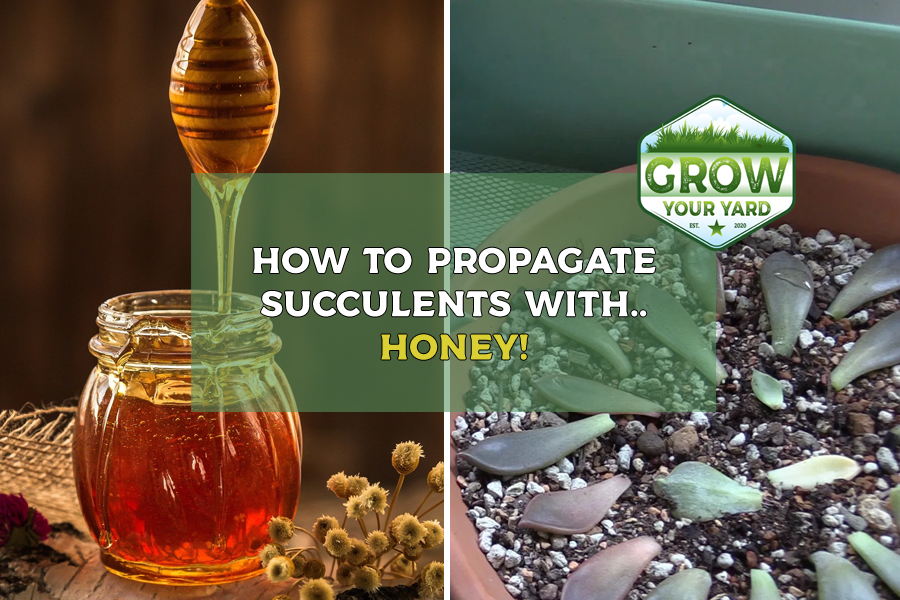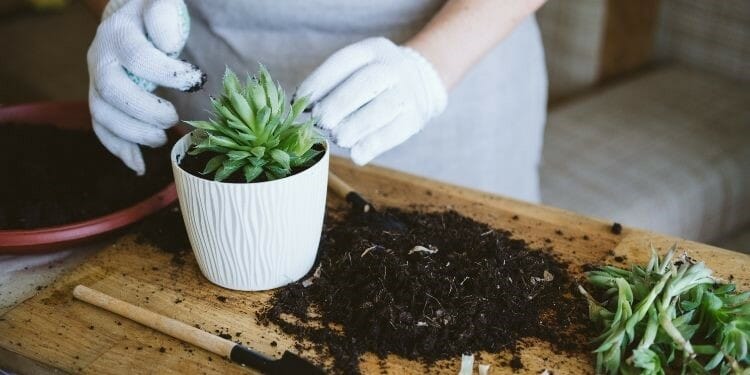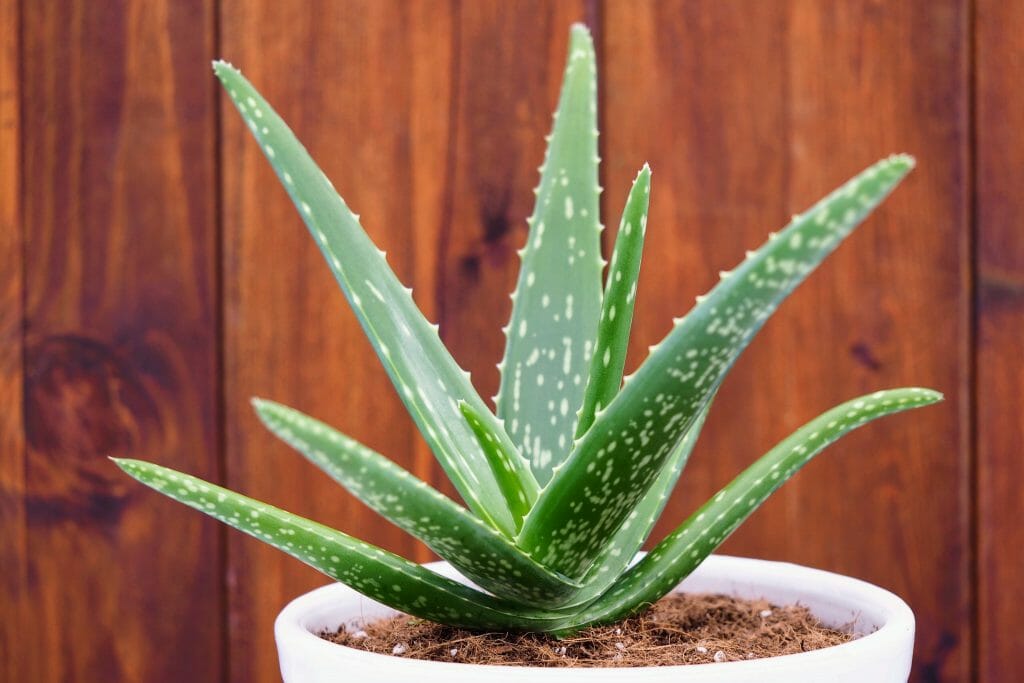Did you know that you can use honey as a rooting aid for your succulent cuttings? Natural, raw honey has some amazing properties that will help your succulents root faster. And, for those of you who don’t like using chemicals, it’s the best option.
So, why is honey such a great aid for propagating new succulents?
The Magic Of Honey
Honey contains natural antiseptic and anti-fungal properties. These help to deter bacteria and fungal growth on your cuttings. The properties of honey are also known to stimulate the rooting hormones in succulents.
Because honey is a natural rooting hormone, it won’t act as fast as the synthetic rooting powders or liquids that you can buy. It might take more than 7 days for you to start seeing any success.
Some people would suggest that you mix the honey in boiling water before using it on your cuttings. However, heat can destroy some of the natural properties in honey so it’s better just to use pure honey on its own.
Remember, you need to use pure, raw honey and not the one you buy from the grocery store. Commercially available honey has been heat treated and sometimes contains other additives.
Therefore, it’s better to get your honey straight from the farm or a local bee-keeper. Check out your local farmer’s market as there’s sure to be a honey seller there.
How To Propagate Your Succulents With Honey
Follow these simple steps to propagate lots of new succulents from the plants you already have.
1. Prepare Your Cuttings
Succulents can be propagated from either their leaves or by using stem cuttings. To gather your cuttings, choose a nice healthy plant as the “mother”.
Take healthy, plump leaves from near the base of the plant. You should be able to remove the leaves by gently twisting them. Take care not to damage the leaves or the plant when you do this. If the leaves don’t come off easily, just use a pair of scissors or your favorite secateurs.
For stem cuttings, choose offshoots from the main stem that are not too soft. Using a pair of scissors or secateurs, cut just above a leaf node. Make sure you only take tip cuttings as you don’t want to have long pieces of stem for propagating.
2. Let Your Cuttings Dry Out
Unlike other types of plants, succulent cuttings need to be left to dry out before putting them into soil. This allows the cut ends to callus and prevents disease entering the cutting.
Just put your cuttings onto a piece of newspaper, cardboard or paper towel and place in a warm, dry spot. Placing them out in some sunlight will help them to dry faster. Keep inspecting them until you see the cut ends start to callus. This could take between three to four weeks.
3. Prepare Your Propagating Tray
While your cuttings are drying out, you can prepare your propagating tray. Ensure that the tray you’re using is clean. You might want to sterilize it too.
For the growing mix, make sure you use a good propagation mix or make your own. You can use a mix of potting mix, coconut fibre and perlite. This produces a nice open mix that allows roots to form freely.
4. Dip Your Cuttings Into The Honey
As I mentioned previously, it’s best to use straight honey to dip your cuttings into. Simply dip the cut ends of the leaves or stems into the honey to coat them.
For leaf cuttings, you can place them on top of the soil. There’s no need to bury them. In fact, you shouldn’t do that anyway. Eventually roots will grow from the cut ends of the leaf and make their way down into the mix.
For stem cuttings, it’s a good idea to make a small hole with a pencil or dibbler before pushing the stems into the soil. This ensures that you don’t rub off the honey when you push the stems into the soil.
5. Mist Your Cuttings Daily
It’s important to mist your cuttings on a daily basis to keep them moist. You don’t want to saturate the soil, just give the cuttings a light misting.
This misting helps to create the humidity that most plants need to stimulate root growth.
6. Wait For Roots To Form
Now it’s time to use a little patience. It may take your cuttings several weeks to start producing roots. Just keep them misted while their rooting hormones go to work.
7. Pot Up Your New Plants
After your cuttings have produced roots and are starting to grow, you can pot them up into individual pots. Make sure you handle the baby plants gently so as not to break any of the roots or parts of the plant.
Use a good quality growing mix to pot up your newly grown plants. A good mixture is 2 parts potting mix, 1 part sand and 1 part perlite. Or, you can buy a commercial succulent mix such as the one from Bonsai Jack.
Place your newly potted plants in a sunny spot and watch your little babies grow.
Easy Succulents To Propagate With Honey
Here’s a small list of succulents that are easy to propagate with honey.
- Echeveria – use leaf cuttings
- Kalanchoe – use the offsets produced along the edges of the leaves
- Jade – use either leaf or stem cuttings
- Sempervivum – use stem cuttings
- Sedum rubrotinctum – use leaf or stem cuttings
- Graptoveria – use leaf cuttings
- Aloe vera – use leaf cuttings
- Portulacaria afra – use stem cuttings
- Aeonium Kiwi – use stem cuttings
Frequently Asked Questions:
Does honey help succulents?
Honey is full of anti-fungal and antiseptic properties. Therefore, it protects cuttings from fungus and bacteria.
Can you use honey as a rooting hormone?
Yes, honey stimulates root growth. It also protects the cuttings from bacteria and fungal growth.
Does Aloe work as a rooting hormone?
Yes, it does. Simply mix the aloe gel with a little water in a blender and dip your cuttings into it.
How long does it take a succulent to propagate?
This will vary from species to species. In general, leaf cuttings should start to produce roots in about 2 weeks. On the other hand, stem cuttings can take around 4 weeks before you’ll start to see any roots forming.
Can succulents be rooted in water?
Yes, some succulents will root readily in water. However, to get the best results, planting them in soil is better.
Final Thoughts
Now you know that you can use honey as a rooting hormone for propagating new succulents. The most important point to remember is to use raw, pure honey, not the store bought variety.
Honey has excellent anti-fungal and antibacterial properties that will protect your cuttings from bacterial and fungal growth.
When selecting cuttings make sure that you only use parts from a healthy plant and leave the cuttings to dry out before you dip them into the honey. You can use honey for both leaf and stem cuttings.
Most importantly, be patient. Succulents can take several weeks to start producing roots.
Have you had success using honey as a rooting hormone. Be sure to share your stories with us in the comments below.






